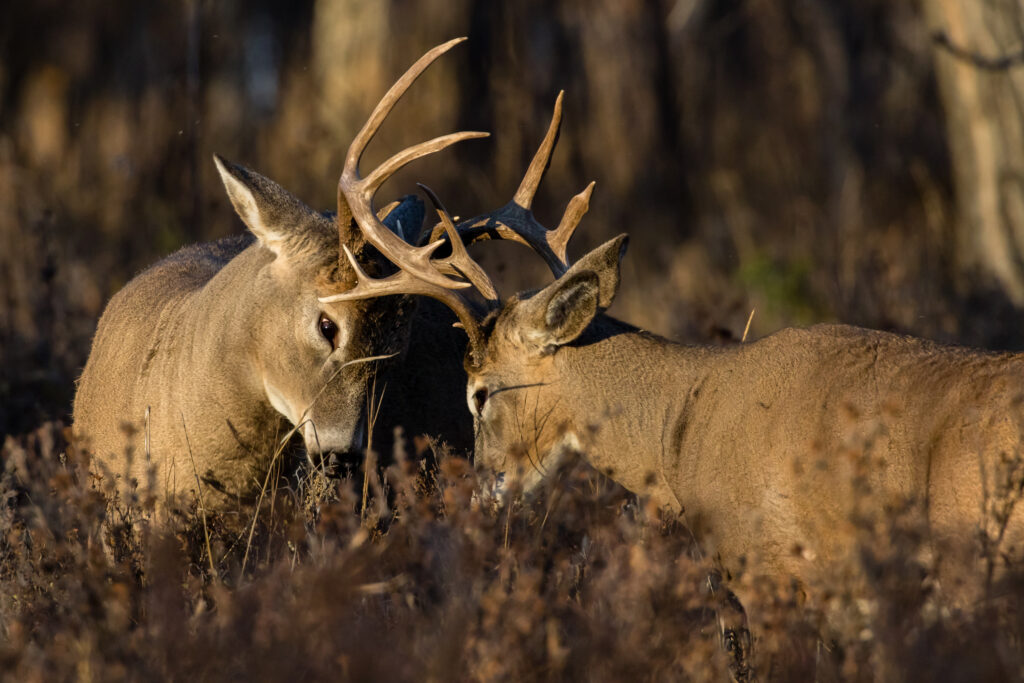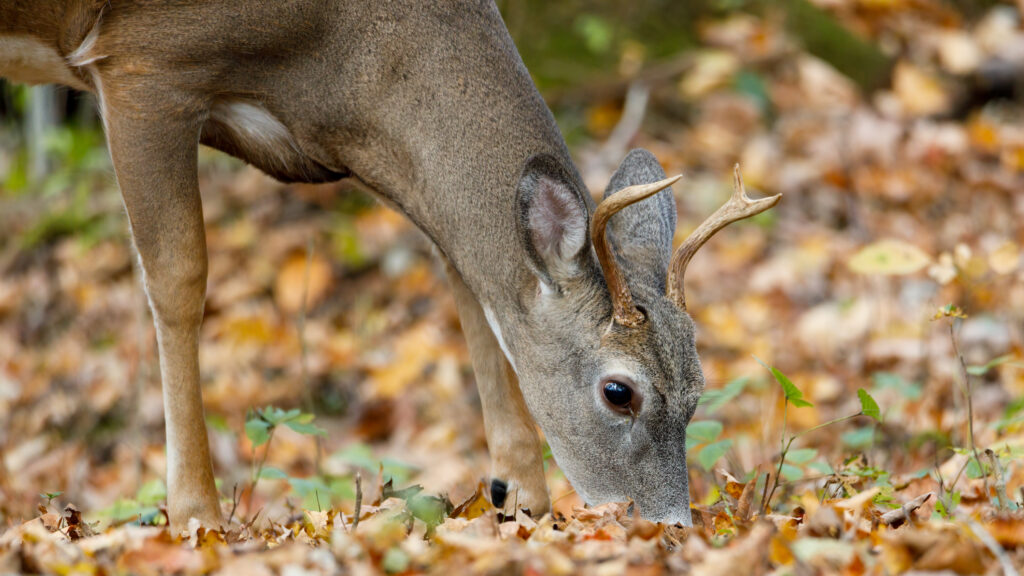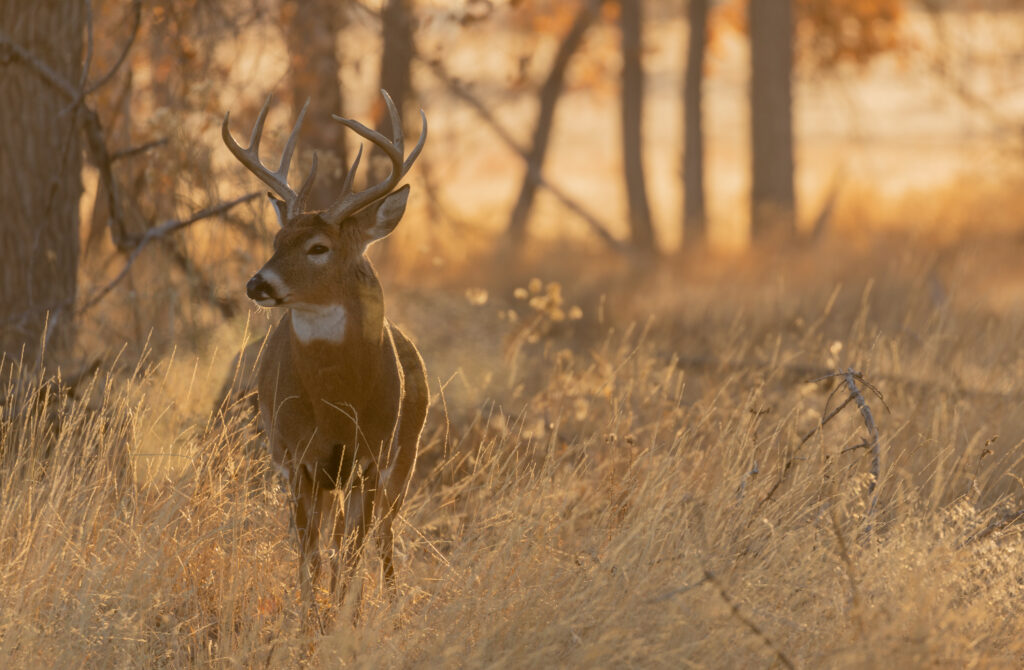
Sign in
Sign in to save favorite properties and equipment, save your search parameters and more
Don’t have an account yet? Sign Up Now
Sign up
Already have an account? Login Now


Sign in
Sign in to save favorite properties and equipment, save your search parameters and more
Don’t have an account yet? Sign Up Now
Sign up
Already have an account? Login Now
Whether you’ve been hunting most of your life or you’re just out for a walk in the late-fall woods, there’s something magical about spotting those towering whitetail tines. Elegant, quick, and agile, whitetail deer provide plenty of hunters with an exciting challenge. Many hunters prize these beautiful animals, with a specific goal in mind: to increase the value of their whitetail hunting land.
Two of those hunters, John Tate and Shad Sheldon, have hunted whitetail throughout much of the country. John watched his dad bag a buck in the woods of South Carolina when he was just 6 years old and the love of the hunt grew from there. “I was hooked after that and grew up hunting and fishing – doves and trout and bass and deer.” It was a passion that led to a job as a cameraman, editor, and producer for Realtree Outdoors on the Outdoor Channel and ESPN2 for many years before John traded in the camera for his real estate license and a position with Hayden Outdoors.
Shad’s story follows a similar passion-turned-profession trajectory. A hunter since he was just seven-years old, he killed his first deer when he was 10 or 11. Later in life, he bought a tract of land in northwest Kansas that he and his wife developed into a hunting lodge. When they went to sell the property, they turned to Hayden Outdoors for the company’s expertise in selling large acreage hunting, ranching, and recreational properties from coast to coast.
Today, both men combine their extensive hunting expertise with their work for Hayden Outdoors as recreational real estate agents. They understand the importance of optimizing your property for whitetail deer hunting, and, more importantly, how best to do it. In a recent sit-down – the wall behind Shad clad in impressive whitetail and mule deer mounts – John and Shad shared their thoughts on how best to increase the value of whitetail deer hunting property.
Before you optimize your hunting property for whitetail deer habitat, it’s important to understand the animals. The most notable characteristic of whitetail (or white-tailed) deer – and where they get their common name – is their “white flag” tail that stands alert anytime a deer senses trouble. They are herbivores and munch on a variety of tall grasses and plants (and your garden if you’re not careful about putting up proper fencing).
Female deer, or does, typically give birth to between one and three young (fawns) in early spring. Only male whitetail deer grow antlers, and they shed them every winter. Growth typically begins in late spring and throughout spring and summer, the antlers are covered in a fine-hair membrane that has the appearance of velvet. Antlers will grow through late summer and early fall before hardening on the animal’s head, just in time for bucks to defend their territory during the rut. Whitetail deer tend to graze mostly at dawn or dusk, and they have very good eyesight and hearing. Most live between two to three years, although whitetail deer can live up to 10 years in the wild and longer in captivity.
Whitetail deer are pretty solitary animals. Unlike elk, which migrate in herds, whitetail deer typically move in small family units of a doe and her fawns with the bucks living alone most of their lives. Does and fawns tend to bed close to food and water sources while bucks can be very strategic about where they bed down, especially during hunting season.
During the spring and summer, bucks will bed down at their convenience, near food and water. However, once hunting season kicks off and they become aware of hunters in the area, bucks will look for safer haven resting with their backs against a solid surface such as downed timber and large rocks, at least before the rut starts. They watch for downwind predators, listen for any nearby threats, and smell for oncoming hunters.
Does, fawns, and young bucks feel comfortable wandering into open terrain to eat. However, this is not typically the case for mature bucks. They practice safety measures to help lessen threats during hunting season, such as taking indirect routes to food sources and bedding down for large portions of the day, eating and drinking at dawn and dusk. This doesn’t mean it’s impossible to spot a buck during the day, but look for smaller food plots and water sources as opposed to the great wide open. And if you’re tracking the animals, don’t forget about water. Bucks will typically drink between three and five quarts of water a day, so if you can find their water source (keeping in mind it can be as small as a puddle or meager spring), you increase your odds of bagging the prize.

The deer rutting season – when deer mate – takes place between October and early December. Bucks become much more active during this time, venturing out more, and sometimes into more wide open terrain, in an effort to mate with a doe. It’s also a good time of year to spot a big buck during the day as they wander from more well-hidden sanctuaries.
Because of this additional daylight activity, the rut offers the best odds of a hunter bagging a buck. The male deer will go where the does go, so set up your stands and blinds within sight of bedding spots. It’s also this time of the rutting season bucks will abandon meandering trails for more direct routes to food plots and water sources.
There are phases of the rutting season, including:
If you’re looking to manage whitetail deer behavior on your own hunting property during the rut, John offers some advice. “It all correlates back to food. If you’ve got the food, you’ve got the does. If you’ve got the does, you’ve got the bucks.”
To that point, what kind of food is best for whitetail deer? John continues, “It’s all situational. In the Midwest, you’ve got the crops. In Wyoming, you’ve got alfalfa. Do soil tests to make sure you’re getting the soil right and plan around crop rotations.”
Shad adds that pH levels are critical. “You want your soil to have plenty of nitrogen and phosphorus in it. Generally, you need to have both protein and minerals. Alfalfa, wheat, clover, and oats is a good mix.” Both men point out that owning whitetail deer hunting property is a 365-day endeavor. “Having a successful whitetail hunting property is a year-round job. You can’t just show up on opening day. To be successful, year-in and year-out, you need to be thinking about the land,” says John.
Shad agrees, “I want to make sure I’ve got enough mineral holes in summer and again in January. The minerals have to be in the deers’ bodies by hunting season to help grow their antlers. We make sure, no matter what time of year, they have access to plenty of minerals.”
Test your soil and establish the best mix of food for whitetail deer in your area. Common whitetail deer foods include:
Like all other animals, deer also need plenty of pure, clean water. Sources will vary from state to state. If there is not an obvious natural water source on your land, such as a lake, pond, stream, creek, or spring, look for alternatives. These can include old wells, troughs, and other rain capture devices.
Deer need to bed down and feel safe doing it. They require proper ground cover and sanctuary, but this doesn’t mean you need large amounts of established forest on your property. John offers this rule, “33/33/33 is a good balance – roughly one-third full timber, one-third edge property, and one-third open space.”
Successful whitetail deer hunting land also features tall grass. “One thing I’ve learned,” says John, “Is that you don’t have to have a lot of trees to be successful. Features like fence row and creek beds provide great cover and shelter.” During the offseason, assess your property and learn where the deer trails are and where the main corridor is.
One point of note is cattle. If you run cattle on your land or lease it to someone who does, it’s important to be mindful of when you pull the cattle off. Shad makes his rancher pull off the first of September. “This allows for a good 30 – 45 days with no cattle on the property to allow deer to get back into the land.” According to the seasoned hunters, a cow can ruin a deer hunt faster than just about anything.

Spending plenty of time walking your whitetail hunting property is the best way to learn where the deer travel, how they navigate the land, and what they’re eating and when they’re eating it. Keep these practices in mind for maintaining a successful whitetail deer-friendly property:
Building a good environment for whitetail to thrive benefits not only the deer population on your land, but also has a positive impact on your property value. Well-maintained trails and roads, properly fertilized and cleared row crops, and good sources of water will attract deer – and help maintain your bottom line.
As always in real estate, a well-maintained, turnkey property goes a long way towards building value – and that includes all of your hunting infrastructure. In addition to any homes on a property, make sure all blinds and stands, storage buildings, and barns are clean and sound.
The most important thing to remember when you’re trying to sell or appraise a whitetail hunting property? “Pictures!” says Shad. “If we’re gonna sell it, we’ve got to have proof.” You can talk about those eight-point bucks all day long, but unless there’s actual proof they exist on your property, you might as well be convincing buyers BigFoot hangs out there, too.
Whitetail bucks have a very keen sense of smell, so managing your own odors and scents is important to getting in close enough for the kill. Enlist these tips before hunting season starts or you head into the field to help yourself remain as undetected as possible:
For the best scent control, however, Shad simply says, “Stay down wind.” And he’s not wrong. Paying close attention to wind direction while you’re hunting offers one of your biggest advantages to being on the right side of that big buck when the time comes.
John agrees, “You can use scent-free soaps and sprays, but at the end of the day, you’ve gotta hunt the wind. It’s your biggest adversary and your biggest helper. My experience is, those scent reducing techniques only help on the borderline. The only way to fool whitetail deers’ noses is to be downwind of them.”
When it comes to managing your whitetail deer hunting land year after year, hunting ethics and resource conservation lead the way. Make sure your visitors and guides have taken proper hunting safety courses, and understand the importance of ethical shot placement and how best to achieve it.
Working to conserve your resources prevents disease and overpopulation. It also benefits all of the species that wander your property. “The deer aren’t the only ones that benefit from these food plots and land improvements,” says Shad. “Quail do; mule deer do; turkeys do. I’ve seen disease and drought ravage deer populations, but we can, to a point, improve the land deer are living on with food plots, trimming vegetation, and hinge tree cutting so the deer aren’t stressed. It can give the herd a healthy existence for years and years to come.”

Whitetail deer hunting is about more than meat. It’s about more than the trophy. It’s about spending time outside with friends and family and connecting with the land. For John and Shad and so many other passionate hunters like them, it’s a lifelong journey.
“It’s a good way to get outdoors. To connect with your family. A good way to spend time not on the phone or in front of a TV,” says John. “We all want to shoot a deer like the ones on Shad’s wall, but those animals represent a story and a journey and where he came from. The five-pointer my dad shot in South Carolina when I was a kid means just as much or more to me than anything I’ve shot because I was with him. Now I’m hunting with my nephew. I’ve hunted with a lot of people over the years. Some hunts were successful; some weren’t. It’s funny how friendships are born being out in the woods together, around a whitetail deer camp.”
John continues to point out that not as many people hunt any more, and yet, it remains an important tradition and inextricable way to connect with the land, with conservation, and with whitetail. Learn more about owning your own whitetail deer hunting land in Kansas, North Carolina, Missouri, or Nebraska, and all of the magic and reward that comes with it.